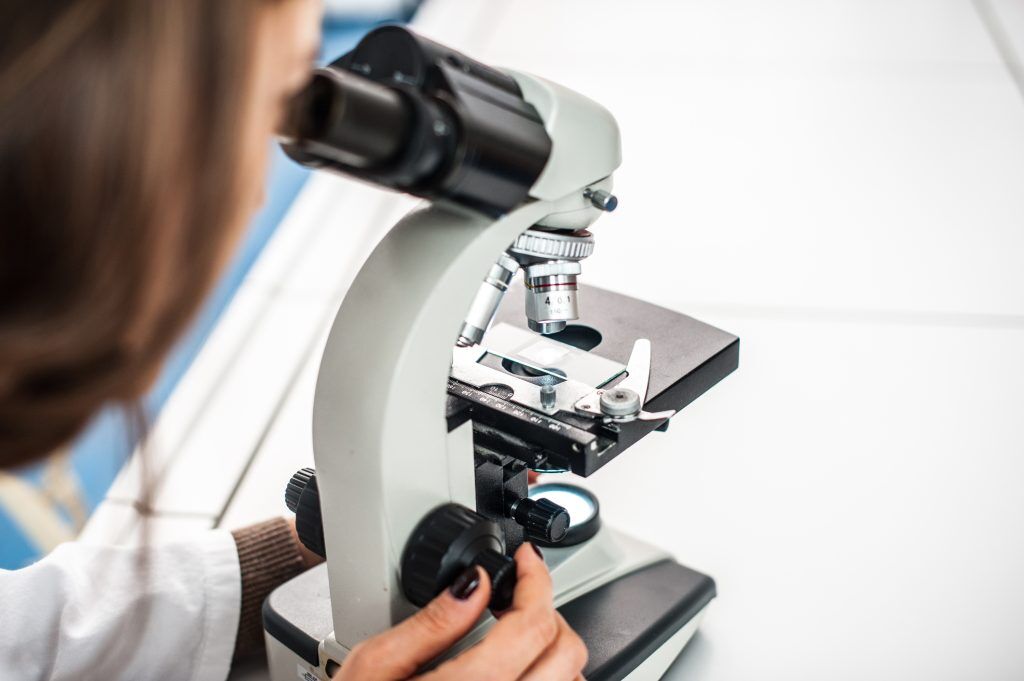A multi-institutional team of scientists are making promising discoveries about the tumor microenvironment that could yield breakthroughs in breast cancer early detection and treatment.
A tumor is not made up of just cancer cells. Within a tumor there is an entire ecosystem of both cancer and non-cancer cells interacting with each other. This is known as the tumor microenvironment. The tumor microenvironment can either support or prevent the growth of cancer cells, depending on a number of different factors.
Unlocking the mysteries of the tumor microenvironment is the focus of the Stand Up To Cancer (SU2C) -Breast Cancer Research Foundation Convergence Research Team, “Ecology of the Tumor Microenvironment in Breast Cancer.”
Rather than focusing on individual parts of the microenvironment, the BCRF SU2C researchers are studying the interactions between key subpopulations of cells. Their goal is to develop novel approaches to modify the tumor microenvironment to improve response to anti-cancer therapies, like immunotherapy. To do so, the they use a variety of technologies, including cell microscopy, image analysis, sophisticated laboratory models of breast cancer, DNA sequencing, bioinformatics, computer modeling, and nanotechnology.
Leveraging Expertise and Resources to Accelerate Discoveries
This work isn’t taking place in one lab. The multi-disciplinary team consists of:
Dr. Gurinder Atwal, Cold Springs Harbor Laboratories, (New York)
Dr. Darrell Irvine, Massachusetts Institute of Technology (Cambridge, MA)
Dr. Peter P. Lee, City of Hope (Duarte, CA)
Dr. Herbert Levine, Rice University (Houston TX)
Dr. Clare Yu, University of California, Irvine (Irvine, CA)
Together they are taking advantage of their diverse areas of expertise and resources to accelerate discoveries to benefit patients. For instance, Dr. Lee’s team is performing genomic analysis on patient samples; Dr. Atwal’s team is conducting computational analysis on the data generated from the genomic analysis; The teams led by Drs. Levine and Yu are performing mathematical modeling and image analysis to identify the key players in the microenvironment of the same patient samples; Dr. Irvine’s team will be tasked with testing treatment combinations based on findings from the group.
“I am honored and excited to work with this team of outstanding scientists from diverse but complementary backgrounds,” Dr. Lee said, “We deeply appreciate support from SU2C/BCRF and are confident that we will make original/unorthodox discoveries together.”
Mapping the tumor landscape for hidden clues
The team is making progress in understanding the role of different components of the microenvironment, as well as the significance of changes in immune cell alterations that may precede cancer cell invasion.
Preliminary results have shown that cells in the tumor microenvironment not only turn on, but also turn off certain genes, suggesting that these genes may prevent the tumor from growing or spreading to other tissue–a process called metastasis. Finding out how the tumors turn off the gene reveal a potential target for therapy.
They have also learned that the microenvironment may produce a kind of “repellant”
that prevents immune cells from entering the tumor. This may help to explain why immunotherapies have been less successful in breast cancer compared to other cancers and may lead to new strategies to improve these therapies for more patients.
Because the microenvironment influences all stages of tumor development and growth, this work may lead to advances in early detection, treatment and preventing metastasis.
BCRF has been proud to support this SU2C convergence team since 2015. It’s a prime example of how a collaborative approach accelerates discovery.
In addition to the results mentioned above, the SU2C team published five articles in the scientific literature related to this work that will further advance the field and our understanding of the cancer ecosystem.







